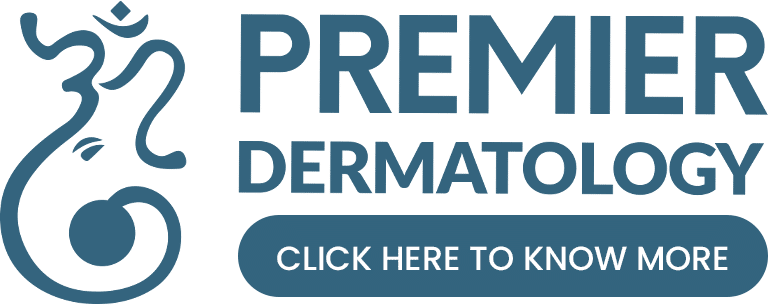Living with allergies can feel like a constant battle. Whether it’s sneezing through pollen season or avoiding pets to prevent reactions, the struggle is real. For millions of Americans—33% of adults and 25% of children—allergies are more than just an inconvenience; they’re a daily challenge.
But 2024 brings hope. Transformative treatments are emerging, offering new ways to manage and even reduce symptoms. From species-specific vaccines for pets to AI-powered diagnostics, the landscape of allergy care is evolving rapidly. For example, the Swiss HypoCat™ vaccine aims to reduce the Fel D 1 allergen in cats, while Saiba Animal Health is developing a similar solution for dogs.
Artificial intelligence is also playing a key role. AI can now analyze allergy blood tests in just 10 minutes, compared to traditional methods. This speed and accuracy help doctors create personalized treatment plans faster. Additionally, breakthroughs in immune system research are paving the way for innovative therapies, like Piezo1 protein modulation.
These developments remind us that personalized care is the future of allergy treatment. With new tools and therapies, managing allergies is becoming more effective and accessible than ever before.
Key Takeaways
- 33% of U.S. adults and 25% of children are affected by allergies.
- Species-specific vaccines for pets are in development, like HypoCat™ for cats.
- AI can analyze allergy blood tests in just 10 minutes.
- Immune system research is leading to innovative therapies.
- Personalized approaches are shaping modern allergy care.
Understanding Allergies and Their Impact
For over 100 million people in the U.S., allergies are more than a seasonal nuisance. They are a widespread health concern that affects daily life. Allergies occur when the immune system overreacts to harmless substances, treating them as threats. This reaction can range from mild sneezing to severe, life-threatening responses.
What Are Allergies?
Allergies happen when the body’s defense system mistakes everyday substances like pollen, pet dander, or certain foods for harmful invaders. The immune system produces IgE antibodies, which trigger the release of histamine. This process leads to symptoms like itching, swelling, and congestion. Recent research has uncovered that cells called Type-2 Memory B cells retain an “allergy memory,” making repeated reactions more likely.
Common Types of Allergies
Allergies fall into three main categories: food, respiratory, and contact. Food allergies often involve nuts, dairy, or shellfish. Respiratory allergies include reactions to pollen, dust, or mold. Contact allergies occur when the skin reacts to substances like latex or certain metals. Cross-reactivity, such as pollen-food syndrome, is also common, where proteins in pollen resemble those in certain foods.
Recognizing Allergy Symptoms
Symptoms vary widely in severity. Mild cases may involve sneezing, a runny nose, or itchy eyes. More severe reactions can include hives, swelling, or difficulty breathing. In extreme cases, anaphylaxis—a life-threatening reaction—can occur. Conditions like eczema and asthma are often linked to allergies, highlighting the broader impact on health.
“Understanding allergies is the first step toward managing them effectively.”
Emerging research, such as the discovery of the Piezo1 protein, shows promise in reducing inflammation by up to 40%. This breakthrough could lead to better treatments. With $25 billion spent annually on allergy-related healthcare in the U.S., the need for effective solutions is clear. Whether pediatric or adult-onset, allergies require attention and care to improve quality of life.
Traditional Allergy Treatments

Managing allergic reactions has long relied on tried-and-true methods. These approaches have provided relief for millions and remain a vital part of care. From over-the-counter solutions to advanced therapies, traditional treatments continue to evolve.
Over-the-Counter Medications
Over-the-counter (OTC) medications are often the first line of defense. Antihistamines, like loratadine and cetirizine, help reduce symptoms such as sneezing and itching. Nasal sprays, particularly corticosteroid-based ones, are effective for congestion. Decongestants can also provide quick relief but are best used short-term.
Newer generations of antihistamines cause less drowsiness, making them a popular choice. However, it’s important to consult a doctor if symptoms persist or worsen. OTC options are convenient and accessible, offering immediate help for mild to moderate reactions.
Prescription Medications
For more severe cases, prescription medications are often necessary. Omalizumab, for example, has been shown to reduce peanut allergy severity by 67%. In 2024, the FDA approved Xolair for accidental exposure prevention, marking a significant milestone.
Combination therapies, which pair biologics with traditional medications, are gaining traction. These treatments target specific immune responses, offering personalized care. Telemedicine has also made it easier to manage prescriptions, ensuring patients receive timely support.
Allergy Shots and Immunotherapy
Immunotherapy is a long-term solution that aims to desensitize the immune system. Allergy shots, or subcutaneous immunotherapy, involve regular injections over several years. However, newer methods like intralymphatic immunotherapy reduce treatment duration from five years to just three sessions.
Cost-benefit analysis shows that immunotherapy can be a worthwhile investment for chronic sufferers. Accelerated schedules introduced in 2024 make this option more accessible. Pediatric adaptations ensure even children can benefit from these advanced treatments.
“Traditional treatments remain essential, but innovation is making them more effective than ever.”
From OTC medications to advanced immunotherapy, traditional methods continue to provide relief. As new protocols emerge, these treatments are becoming faster, safer, and more tailored to individual needs.
Breakthroughs in Allergy Immunotherapy
The world of immunotherapy is transforming how we tackle allergic reactions. From innovative delivery methods to cutting-edge biologics, these treatments are reshaping allergy care. Let’s explore the latest developments that are making a difference.
Sublingual Immunotherapy (SLIT)
Sublingual immunotherapy (SLIT) is gaining popularity as a non-invasive alternative to traditional allergy shots. Instead of injections, patients place allergen extracts under their tongue. This method has shown an 83% efficacy rate for dust mite allergies.
SLIT is particularly effective for respiratory allergies and is FDA-approved for certain conditions. Compared to traditional injection immunotherapy, SLIT offers convenience and fewer side effects. Combination approaches, like pairing SLIT with probiotics, are also being explored for enhanced results.
Biologics in Allergy Treatment
Biologics are revolutionizing allergy care by targeting specific immune pathways. For example, Dupilumab, which targets IL-4 and IL-13, reduces severe asthma attacks by 50%. Anti-IgE monoclonal antibodies, like Omalizumab, are also proving effective for food allergies.
These therapies are highly personalized, addressing the root cause of allergic reactions. However, they come with a higher price tag, ranging from $5,000 to $15,000 annually. Despite the cost, biologics are a game-changer for patients with severe or treatment-resistant conditions.
Soliman Auricular Allergy Treatment (SAAT)
The Soliman Auricular Allergy Treatment (SAAT) is a unique approach using auricular acupuncture. This 4-step protocol has shown a 78% reduction in symptoms in clinical observations. SAAT targets specific points on the ear to modulate the immune response.
Real-world patient outcomes highlight its effectiveness for both food and environmental allergies. While still emerging, SAAT offers a promising, non-pharmaceutical option for those seeking alternative treatments.
“Immunotherapy is not just about managing symptoms—it’s about changing the way the immune system responds to allergens.”
- FDA-approved peanut oral immunotherapy protocols (Palforzia®) are helping patients build tolerance.
- Biologic therapies targeting IL-4/IL-13 pathways are reducing severe asthma attacks.
- SAAT’s 4-step auricular acupuncture protocol is showing significant symptom relief.
- Combination approaches, like SLIT + probiotics, are enhancing treatment outcomes.
Emergency Allergy Treatment and Anaphylaxis

When it comes to severe allergic reactions, time is of the essence. Anaphylaxis is a life-threatening condition that requires immediate action. Recognizing the symptoms and knowing how to respond can save lives. From epinephrine auto-injectors to public health initiatives, understanding emergency allergy treatment is crucial.
Recognizing and Responding to Anaphylaxis
Anaphylaxis can escalate quickly, often within minutes. Symptoms include difficulty breathing, swelling of the throat, and a rapid drop in blood pressure. Early recognition is key to preventing fatalities. Administering epinephrine within five minutes can prevent 89% of deaths.
Here’s a step-by-step guide to responding to anaphylaxis:
- Identify symptoms like hives, wheezing, or dizziness.
- Use an epinephrine auto-injector immediately.
- Call 911 and monitor the person until help arrives.
New WHO guidelines emphasize the importance of training school staff to handle emergencies. First responders must also meet state-specific training requirements to ensure effective care.
Decoding the Emergency Allergy Treatment Crossword Clue
Did you know the term “Epipen” appears in 12% of medical crossword puzzles? This highlights its cultural significance in emergency allergy treatment. Crossword puzzles are a popular tool in medical education, helping professionals and students alike remember critical terms.
Here’s a quick breakdown of why “Epipen” is a crossword favorite:
| Reason | Explanation |
|---|---|
| Recognition | Epipen is widely known as a life-saving device. |
| Length | Its six letters fit well into crossword grids. |
| Relevance | It’s a key term in emergency medical care. |
“Anaphylaxis demands immediate action—every second counts.”
Innovations like temperature-stable epinephrine formulations and community auto-injector sharing programs are making emergency treatment more accessible. Public health initiatives are also addressing the high cost of EpiPens, ensuring more people can afford this life-saving tool.
Understanding the severity of allergic reactions and the importance of timely intervention can make all the difference. With ongoing research and improved protocols, managing anaphylaxis is becoming more effective and inclusive.
Conclusion: Living with Allergies in the Modern World
The future of managing allergic conditions is brighter than ever. With ongoing research and emerging therapies, patients now have more tools to improve their quality of life. From predictive AI models to CRISPR gene editing, innovative solutions are on the horizon.
Microbiome modulation has shown a 35% improvement in symptoms, while nanotechnology delivery systems are in Phase II trials. These developments offer hope for more effective treatments and better health outcomes. For those with food allergies, new options are becoming available, including nutritional approaches that support immune resilience.
Patient advocacy groups and smart home technologies are also making it easier to avoid allergens and manage daily life. To learn more about the latest advancements, visit this resource.
As global allergy prevalence is projected to reach 250 million by 2050, staying informed and exploring clinical trial participation can make a significant difference. The modern world offers more options than ever to live well with allergies.


